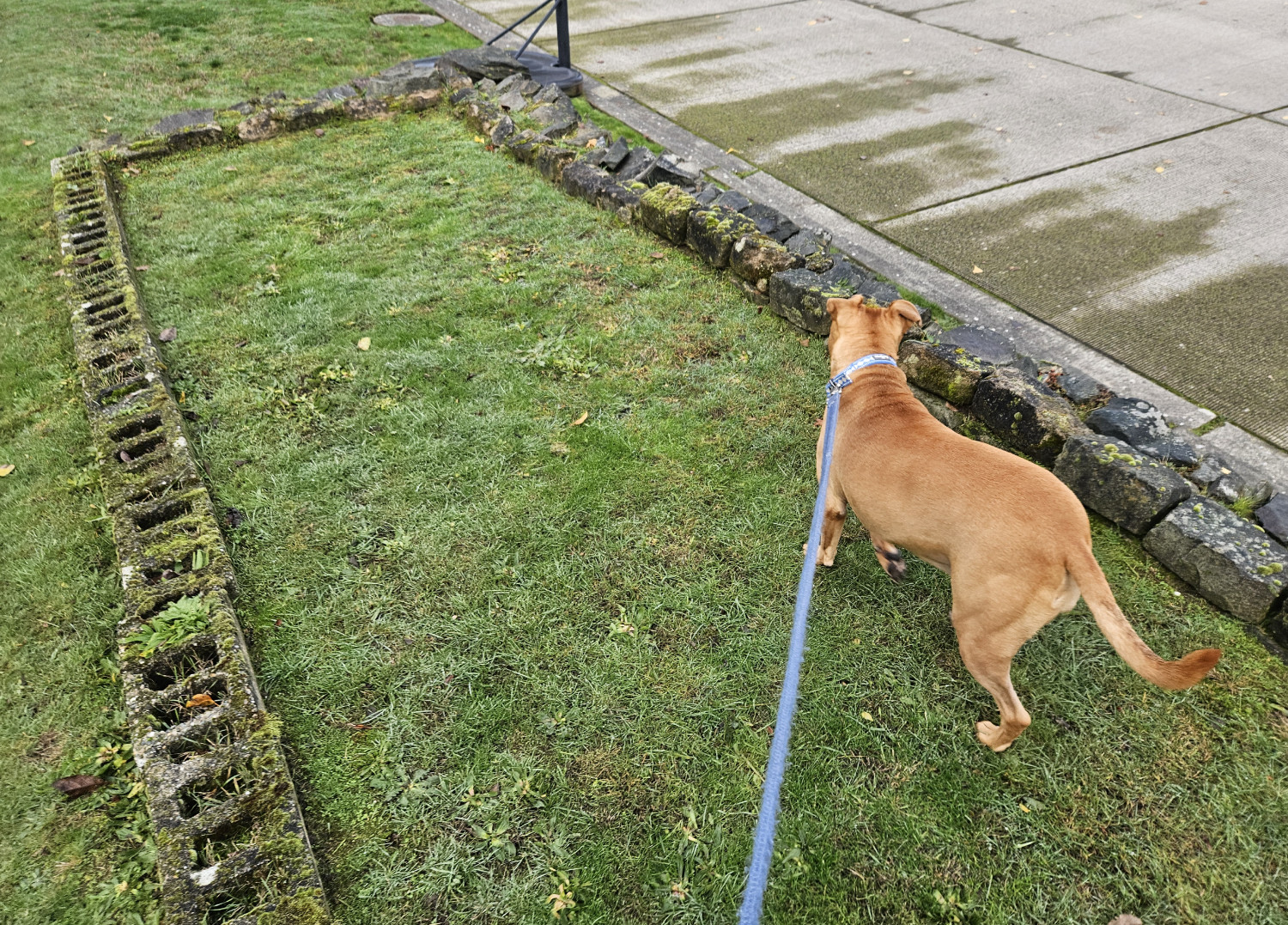The Ruin Of The Old World

Barley, a dog, trots along a patch of grass encircled by moss-encrusted cinderblocks delimiting what was no doubt a flowerbed or tended garden once upon a time.
The Pacific Northwest is rather poor in ruins, relative to the rest of the world. In large part, we may attribute this to its abundance of lumber, from which very comfortable habitation may be built but that is rapidly reclaimed by the land if left unattended for any length of time. Given that sensible people build structures to be used today, not to be visited by tourists in 400 years, why bother building things out of stone? It’s a shame, because there’s something very satisfying about poking around a genuine ruin, one that’s still at the mercy of the elements, that’s not noteworthy enough to have a fence or a ticket booth. I enjoy the humbling experience of sitting with the knowledge that such a structure was the site (and likely the focus) of many stories that are have become wholly unknowable with the passage of time.
Rather more modestly, it seems plausible that this rectangle represents the efforts of a resident in years past to do something a bit more deliberate with their yard, only to give up or move away. The unattended soil was no doubt immediately conquered by the surrounding greenery, and within a few seasons there wouldn’t have been any distinguishing the flora within the boundary from that without.